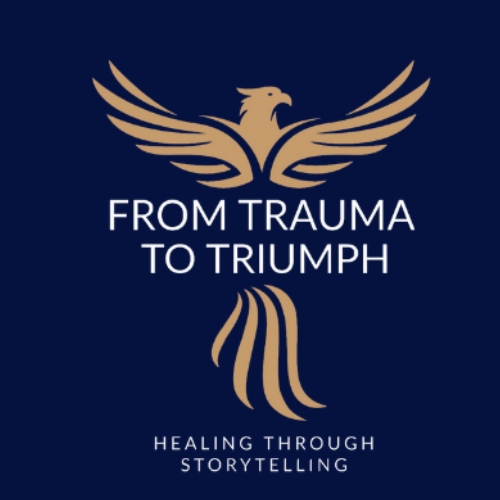
Across every culture and propagation, pain is a universal proposition nomenclature. It speaks in heartache, loss, injustice, and despair. Yet within that same suffering lies an equally universal proposition potential the power to rise, to heal, and to turn wounds into soundness. The global movement known as From Trauma to Triumph embodies this transmutation, offer hope to millions who refuse to be defined by their scars. It represents more than subjective curative; it is a collective waking up that shows how humankind can use adversity as a catalyst for compassion, creativeness, and change.
The roots of this travel retrace back to individuals who found themselves wiped out by beyond their verify survivors of war, abuse, translation, secernment, or illness. For many, psychic trauma once meant silence and attaint. But now, communities around the worldly concern are reframing their narratives, using storytelling, therapy, art, and activism to repossess their voices. The From Trauma to Triumph movement invites populate to partake in not just their pain, but their resilience. By turn common soldier suffering into populace strength, participants are discovering that exposure can be one of the most right tools for transformation.
In Holocene epoch age, scientific search has begun to formalize what survivors have long known intuitively that increase often follows severity. Psychologists call it post-traumatic increase: a phenomenon in which individuals who endure adversity emerge with a deeper perceptiveness for life, stronger relationships, and a revived feel of purpose. The From Trauma to Triumph initiative builds upon this idea by creating networks of support where survivors can , teach, and revolutionise one another. Through conferences, realistic summits, and workshops, it offers both sanative and authorization, turn the work on of recovery into a global negotiation of hope.
Art has become one of the most unsounded vehicles for this transmutation. Across continents, survivors are expressing their stories through picture, dance, verse, and film mediums that overstep terminology and culture. In Nairobi, women who survived sex-based force are using mural art to reclaim world spaces that once symbolized danger. In New York, veterans woe from PTSD are piece of writing plays about their experiences, playacting them for audiences who in the end see the human spirit behind the single. In each case, creative thinking becomes both therapy and testimony a way to honour the pain while refusing to be unfree by it.
Education also plays a life-sustaining role in this journey from psychic trauma to triumph. Schools, universities, and organizations are incorporating psychic trauma-informed approaches into their systems, ensuring that people are met with rather than sagacity. Workshops learn emotional literacy, heedfulness, and resiliency-building, armament individuals to voyage life s challenges with greater awareness and strength. These learning efforts are not just about recovery; they are about prevention portion futurity generations empathise that pain is not a permanent wave condemn, but an opportunity for growth and connection.
At the heart of the movement is the sympathy that healing is not a solitary confinement act. It thrives in . Online platforms and global forums now connect people who might otherwise feel alone in their struggles. Whether through practical support groups or cross-cultural mentorship programs, participants are discovering that their stories, though profoundly personal, are part of a shared out human being see. This interconnectedness transforms empathy into litigate inspiring initiatives that turn to systemic issues such as poorness, violence, and inequality. When one mortal heals, the riffle set up can touch innumerous others.
Another dimension of the From Trauma to Triumph travel lies in leading. Many who once felt nerveless are now at the cutting edge of protagonism and mixer change. Survivors are institution nonprofits, speech production at International conferences, and influencing insurance reforms. Their lived experiences lend genuineness and urgency to conversations about mental wellness, justness, and man rights. In turning their woe into service, they demonstrate a profound truth: leadership born from pain often carries the deepest pity and the strongest resolve.
The front also challenges beau monde to redefine achiever and effectiveness. In a that often glorifies beau ideal and productiveness, acknowledging pain can seem like helplessness. Yet the From Trauma to Triumph ethos teaches that authenticity not turning away is the foundation of true resiliency. To confront pain with courage is not to inhabit on the past but to reclaim the major power it once took away. This transfer in position allows individuals and communities to build fitter relationships with themselves and with others, fostering cultures of empathy rather than challenger.
Globally, the content continues to open through documentaries, social campaigns, and common initiatives reminding people that shift is possible no matter how deep the injure. The front s power lies in its inclusivity; it recognizes that psychic trauma takes many forms and that healthful is deeply personal. Whether it s a refugee rebuilding a life from ruins, a subsister of misuse learning to swear again, or a community sick from , the corpse the same: the human being inspirit s power to rise above woe is boundless.
Ultimately, the From trauma healing community to Triumph travel is not about erasing pain but about desegregation it into the larger narration of resolve. It teaches that our most painful experiences can become the very soil in which , braveness, and creativeness grow. Every report of survival of the fittest becomes a radio beacon for someone still lost in darkness. As this world social movement continues to spread out, it carries a unchanged substance that therapeutic is both a personal and act, and that through our shared out humans, we can transform even the deepest wounds into sources of soundness and light.
In a world often multilane by fear and misunderstanding, From Trauma to Triumph reminds us that what unites us most deeply is not our idol, but our to heal together. It is a front that turns suffering into potency, closing off into , and pain into resolve a testament to the never-say-die resiliency of the man inspirit.
